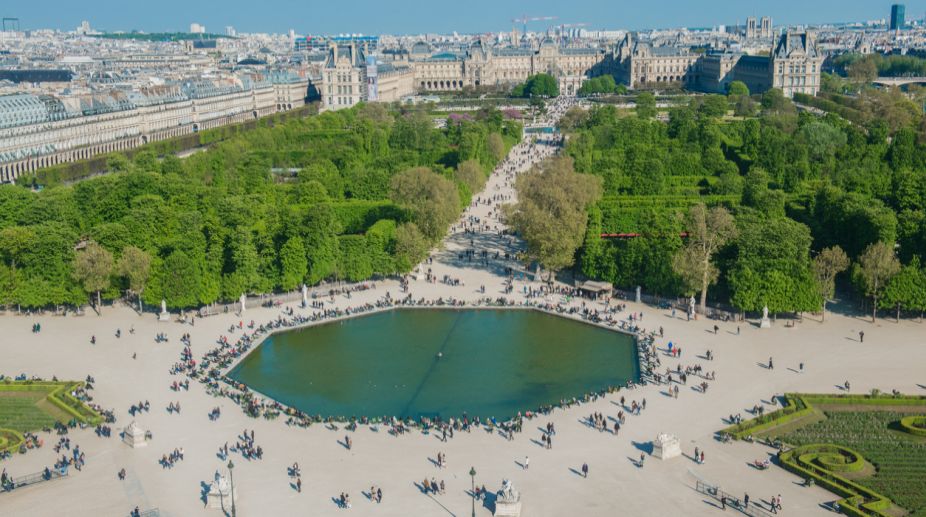It was the best of times, it was the worst of time” remarked Charles Dickens about The French Revolution in his masterpiece A Tale of Two Cities. Indeed it was —the modern era has unfolded in the shadow of the French Revolution spanning between 1789 to 1799 and its central phrases and symbols, like Liberté, fraternité, égalité, has become the clarion call for other major upheavals in modern history including the Russian revolution, the centenary of which is being celebrated this month.
The Revolution dumped the prevailing monarchy and established the republic and after a violent period of political turmoil finally ushered in the reign of Napoleon that changed the course of history of Western Europe. Towards the end of 1780s, the French government was badly in debt and regressive unpopular taxation schemes were deployed to restore the financial status. To complicate matters, years of bad harvests angered the common masses against the privileges enjoyed by the indifferent monarchy.
Advertisement
Demands for change were formulated in terms of enlightenment ideals and was instrumental on the storming of the Bastille, the medieval fortress cum centre of royal authority in Paris on July 14, 1789. A central event of the first stage, in August 1789, was the abolition of feudalism and the old rules and privileges left over.
The next few years featured political struggles between various liberal assemblies and right wing supporters of the monarchy keen to disrupt major reforms. Finally the French victory at Valmy led to proclamation of the Republic in September 1792 and the much condemned execution of King Louis XVI in January 1793. Very little traces remain in Paris of those tumultuous years.
This article traces the landmarks of the French revolution whatever exists now, in a discovery of Paris lesser known.
Place de la Bastille
We start our journey at the site of the notorious prison fortress which was completely demolished by angry masses. A square , Place de la Bastille was built in its place to celebrate the victory of democracy over tyranny. The 52 m column is topped by the gilded statue of the Spirit of the Liberty. The remnants of the only existing giant bell are placed in the nearby park.
Place du Chatelet
A public square on the right bank of river Seine, this place commemorates the prisons that were demolished in 1802. The palm trunk is topped by gilded figure of goddess Victory holding a laurel wreath in each hand.
Tuileries Garden
Our next stop is Tuileries Gardens located just beside the much visited Louvre Museum. King Louis XVI was brought here on 6 October 1789 against his will and was put under surveillance.The monitoring increased manifold after the Kings’s failed attempt to flee the country from here. The royal family was allowed to roam about here on the evening of 18 September 1791- the historic day when the French constitution was established.
Place de la Concorde
Just off the Gardens, the new revolutionary government had erected the guillotine and King Louis XVI was executed here in front of cheering crowds. The guillotine was most active during Reign of Terror where more than 1200 people were executed in a month. Slowly as the revolution intensity came down, the guillotine was removed and replaced by the magnificent 3300 year old Egyptian obelisk gifted by the Khedive of Egypt in 1829.
La Conciergerie
This is a royal palace that was used as prison during the French Revolution used to trying around 2600 prisoners including Queen Marie Antoinette before her execution. A large part of this is used as offices of the government but it still contains the list of those who died in the guillotine, the actual cell of Marie Antoinette and a recreation of her cell.
Assemble Nationale
During the revolution, the National Assembly which existed from 13 June 1789 to 9 July 1789 was a revolutionary assembly formed by the representatives of the Third Estate (the common people) of the Estates-General. Later it was known as the National Constituent Assembly. Thereafter Napoleon added to the palace a colonnaded front in a bid to mirror the Madeline temple on the opposite bank of the river.
Les Invalides
One of the most popular tourist destinations in Paris, this complex was originally a hospital for aged and retired war veterans since 1676. This later transformed itself into French military headquarters and cannons from here were seized in July 1789 by the common masses to storm the Bastille. Now a massive war museum, this also is the final resting place of several French war heroes including Napoleon. The most striking feature of the chapel is a 107 m dome and remains a stunning piece of French Baroque architecture.
No trip to Paris is complete without feeling and experiencing these historical pilgrimage sites. The revolution has inspired generations including the Indian freedom struggle. The father of modern India, Raja Rammohan Roy had undertaken a visit to Louis Philippe whose accession to throne was recognition of revolutionary ideas of liberty, equality and fraternity.
The humanistic and egalitarian spirit of the revolution had fired his imagination and he is famously remembered to have exulted “Glory, glory, glory to France” while saluting the French republican flag during his journey to Europe.











